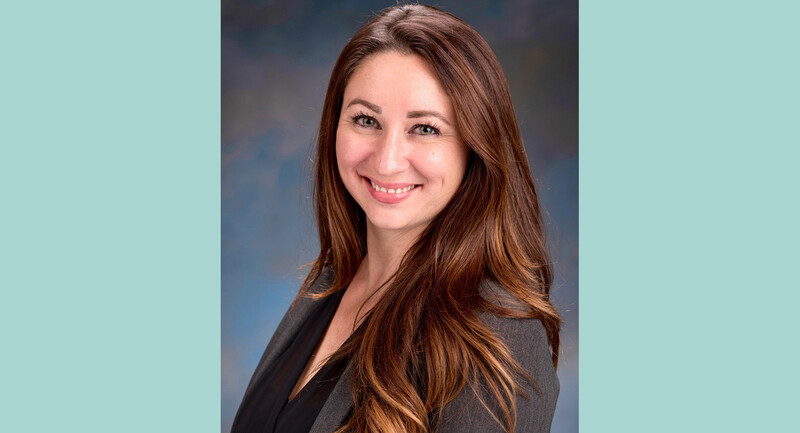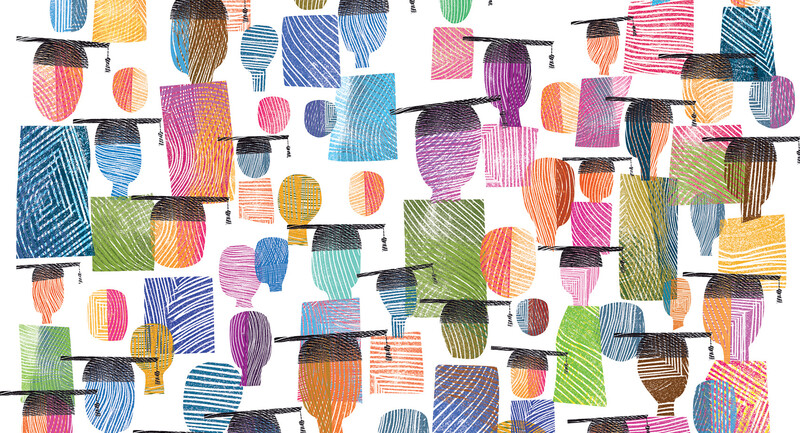Something remarkable is happening throughout the U.S. education system. Educators at all levels, from university faculty to early childhood-education teachers, are clamoring to learn more about the science of reading.
As the founder of Deans for Impact, a nonprofit that has long championed the need for teachers to understand learning science, I find this new wave of interest something to celebrate. From a scientific perspective, we know a great deal about how children learn to read. Yet, for too long, we haven't done enough to ensure that new teachers—in particular, teachers of children from ages 0–8—are familiar with this science as they start their careers.
Veteran educators reading this essay may be feeling skeptical about my optimism—and with good reason. After all, it wasn't long ago that the U.S. education system was engaged in what many refer to as the "Reading Wars." Those so-called wars pitted advocates for explicit phonics instruction against "whole language" partisans. The fighting was fierce. Both sides claimed to have science on their side, and neither won an outright victory. Advocates for phonics-based instruction took comfort in the authoritative findings of the National Reading Panel in the year 2000, which affirmed the importance of developing phonological awareness in young readers. For their part, whole-language supporters largely shifted to supporting "balanced literacy," which, to summarize briefly, ostensibly blends phonics and other reading-skills instruction with time for children to read complete texts. (Whether teachers who use balanced literacy actually keep these components in balance is the subject of ongoing debate that I won't explore in this essay.)
After some pitched battles in the early 2000s, things seemed to settle into an uneasy truce among reading experts. But perhaps lost in the fog of the first Reading Wars was an important question: Were (and are) teachers actually using evidence-informed approaches to help students learn to read? Empirical evidence suggests the answer is, sadly, no (Kretlow & Helf, 2013). And over the past two years, driven in part by hard-hitting reporting by American Public Media's Emily Hanford (2018), the education community has been forced to confront the question: If there's a science related to learning to read, why aren't all teachers employing that science in their practice? And if they aren't, who bears responsibility for changing that reality?
Or, as master educator Yoda might ask, "Begun again, the Reading Wars have?"
In what follows, I'll explain why I think the answer is no, and why I believe the recent surge of interest in the science of reading is poised to take deeper root in K–12 education practice. At the same time, I'll offer some strategic advice to advocates for applying findings from reading science to how we teach kids to read—advice that may help limit the potential for backlash that may arise again as this movement grows.
The Science of Reading: A Quick Summary
Reading is an unnatural act.
There is an enormous amount of complexity buried in that sentence, complexity that ties into issues that strike at the core of public education, so I'm going to spend a little time unpacking what it means. As I do, bear in mind that this is meant to be an (embarrassingly) quick summary of reading science.
There are certain things we learn "naturally," that is, as the result of millions of years of human evolution. The most obvious example is understanding spoken language. Absent cognitive or hearing impairment, virtually all human children will learn what words mean simply by being around and listening to other humans.
Reading is another matter entirely. Anthropological records suggest the oldest use of a written alphabet emerged approximately 6,000–8,000 years ago—a mere blip on an evolutionary timescale (McCarter, 1974). This is why it's not accurate to call reading, and the process by which we learn to read, "natural." It's a modern human innovation—arguably the most powerful in our species' history.
But the cost of that innovation is high in terms of brainwork. As cognitive scientist Daniel Willingham (2009) has observed, although humans are naturally curious, we aren't naturally good thinkers. In fact, because thinking is hard work, our minds are wired to avoid thinking. Readers of Daniel Kahneman's 2011 book Thinking Fast and Slow should be nodding along here. Put simply, learning to read imposes significant cognitive burdens—and at an age when cognition is only beginning to take form.
Now for some joyous news: Virtually all children can learn to read through formal education (again, absent some cognitive or physical impairment). What's more, the process by which humans learn to read has been well-researched, to the point that we can describe our knowledge of this process as a science. Here are just a few reading-science principles that aren't in dispute among English-language literacy experts:
Children can learn to understand how written letters relate to sounds–to decode text–through explicit phonics instruction (Castles, Rastle, & Nation, 2018). They should receive explicit instruction that teaches the sounds that letters and combinations of letters represent, and the relationships of spelling patterns and pronunciations. Teachers need to be explicit in such instructing; this isn't the place for being a "guide on the side."
The key factor in helping young children transition from decoding text to becoming fluent readers is lots of reading practice with varied texts (Stanovich & West, 1989). Teachers should make books and other texts readily available in different parts of the classroom. But "independent reading" shouldn't supplant direct reading instruction.
Explicit strategies designed to improve reading comprehension cannot, on their own, compensate for lack of vocabulary or content knowledge on a particular subject (Willingham, 2009). It's fine for teachers to teach a few comprehension strategies (like making predictions) to students, but they shouldn't overdo it.
These principles and others related to fostering early literacy are summarized in "The Science of Early Learning," a guide that Deans for Impact published in early 2019. This document explores the practical implications of these principles for teaching children to read. So if the basic principles of the science of reading are well-established, why do some think we're at risk of a second Reading War? Probably because both sides tend to dig in. In an insightful op-ed for the Washington Post in 2018, Rachael Gabriel of the University of Connecticut commented on the tribal-like behavior of both advocates of phonics and advocates of whole-language approaches:
Like different denominations of a single religion, different approaches to reading instruction often have significant assumptions in common, but some core disagreements that each believes is the fatal flaw of the other and the reason to dismiss it completely. Distrust and misinformation on both sides perpetuates dramatic pendulum swings back and forth between contrasting approaches. These rob educators of the continuity needed to master and innovate in any direction and eliminate the possibility of meaningful integration of ideas.
Like the polarization infecting American politics currently, polarization around reading science threatens to undermine reasoned deliberation and uptake. But there's reason for optimism.
Bringing Reading Science into Teaching
If elementary teachers aren't using reading science to the degree we might hope, whose fault is that? For many, blame lies with teacher-preparation programs. Some critics have gone so far as to suggest that university faculty are the education equivalent of climate-change deniers and guilty of malpractice for failing to teach the science of reading (Walsh, 2019).
Not only is this rhetoric unhelpful—if you're trying to persuade people to change their behavior, it's rarely effective to insult them—it's belied by the fact that many programs that prepare teachers are already working hard to integrate the science of reading into their courses and clinical training.
For example, over the past year, teams of teacher educators from five diverse schools of education in North Carolina have been exploring how to integrate reading-science principles into the coursework and practical training they provide to their teacher candidates. With the support of Deans for Impact, this effort—called the NC Early Learning & Literacy Impact Coalition—is focused on ensuring that future teachers understand how to teach young children to recognize and write the letters of the alphabet, and to explicitly and systematically connect letters and sounds.
Faculty at these programs use a "learning cycle diagnostic" to assess how they introduce the principles of reading science to their teacher candidates, and what sort of activities teacher candidates should engage in to understand how these principles can inform effective teaching. For example, do teacher candidates have the opportunity to observe teacher educators modeling effective pedagogy using principles of reading science? And to rehearse their own teaching using these same principles prior to instructing young children?
The result of that inquiry revealed some interesting challenges. Most of these five programs studied reported that a majority of their teacher candidates (60–80 percent) had chances to think about and draw on reading science principles as part of their training by reading research and lesson planning. But when it came to employing these principles through practice-based training, the programs provided few such opportunities to their teacher candidates. In fact, 50–60 percent of these pre-service teachers received no practical training that was explicitly tied to principles of reading science.
To be sure, this is self-reported data, but that's my point: A group of educator-preparation programs have voluntarily joined together to figure out how to integrate reading science into the preparation process. What's more, participating programs are now starting to align coursework for both pre-kindergarten and early elementary grades using the principles identified in "The Science of Early Learning"; developing curriculum maps to see whether and how principles of reading science are explained to teacher candidates; and working with cooperating mentor teachers to ensure they too are familiar with key principles. While a great deal of hard work lies ahead for this coalition, its very existence is evidence that, with the right support and motivation, change is possible.
A Nuanced Approach
So what will it take to drive change across the broader education system? What strategies should advocates for the science of reading use to foster uptake of its principles?
One way to drive systemic change is through policy. The renewed interest in incorporating reading science into teaching has caught the attention of lawmakers across the United States. States as diverse as Alabama, Arkansas, Connecticut, Massachusetts, and Mississippi have recently passed laws to promote reading science, largely through teacher-licensure exams that have beefed up questions related to phonics and other evidence-supported practices.
I'm encouraged by this development, but caution is warranted. As an education advocate for more than a decade, time and again I've seen well-intentioned education policy be translated into questionable (at best) education practice. Put simply, passing laws that demand change is not enough. There needs to be a meaningful plan in place to support improvement to drive real behavior change.
Indeed, it's worth ruminating briefly on why many educators resist teaching phonics explicitly. My hunch is that many educators have been asked to teach phonics "explicitly" without learning the empirically supported theories that explain why phonological awareness is essential to developing literacy. What's more, teaching is an applied science; understanding the science of reading does not in and of itself lead to effective pedagogy. I strongly suspect that some teachers are hostile to phonics because phonics-based instruction, when done poorly, can be mind-numbing for students to sit through. Teachers who've seen this happen are (rightfully) concerned.
To again quote Rachael Gabriel's piece in the Washington Post:
Poor instruction, jumbled instruction, and unbalanced instruction do not occur because of Balanced Literacy, schools of education, or the vestiges of a whole-language movement. Poor, jumbled, and unbalanced instruction is just as likely to exist in settings where explicit, systematic phonics instruction is mandated in schools and teacher preparation programs. (2018)
So how can we advance understanding of the science of reading and support teachers to use effective, thoughtful pedagogical practices that draw from that science? Here are three principles of advocacy that I hope reading science enthusiasts will employ going forward:
Be nuanced. Yes, there is a strong scientific consensus that supports the use of phonics in the early stages of learning to read. But it is equally true, scientifically, that "reading comprehension clearly entails more than identification of individual words: Children are not literate if they cannot understand text" (Castles et al., 2018). Learning to read is a progression from decoding text to fluent reading to deeper inference and comprehension. In advocating for reading science, we should recognize this nuanced progression rather than fall into the trap of stridently demanding (on its own) "more explicit phonics instruction."
Remember, science should inform—not dictate—practice. Broadly, the science of reading offers insights from a cognitive perspective into how we develop as readers—that is, how our minds make sense of written symbols. But, to quote Willingham (2017), "seeking to make a reader out of a child who does not read is an educational goal, not a scientific one." Scientific insights should inform education practice by adding to a teacher's "mental model" of how their students make meaning of text. That still leaves a great deal of space for educators to decide which pedagogical techniques they'll use to help students learn to read.
Focus on encouraging instead of shaming. For the past five years, Deans for Impact has worked closely with more than 50 educator-preparation programs across the country that want to improve teacher preparation, including the programs in North Carolina that are focusing on reading science. While the programs that choose to work with us may be a minority now, they are growing in number. Fostering that growth will be greatly enhanced by celebrating the fact that many programs are taking on the hard work of changing how they prepare teachers, with learning science at the center. It's time to move past stereotypical critiques and the strategy of shame, and instead offer support and encouragement to those who are helping to grow this movement.
Scientific ideas, no matter their usefulness, don't spread of their own accord. Let's work together to foster the science of reading while also striving, in Tolstoy-esque fashion, to go from war to peace.
Reflect & Discuss
➛ Did you learn about principles of reading science in your teacher-preparation program? Has anyone pointed you to these findings as part of PD?
➛ Consider the three "indisputable" reading science principles Riley lists on p. 19. Are these a surprise to you? What implications do they have for how you teach reading?
➛ How do you think reading instruction in your school or district could be improved?









